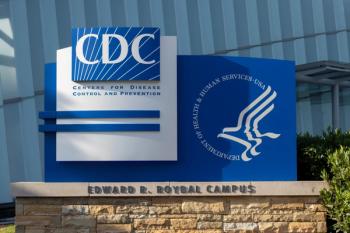
Study Finds Folfirinox is Well Tolerated, Potentially Effective in First-Line Treatment of Biliary Tract Cancer
The median progression-free survival and overall survival were 7.4 and 14.7 months, respectively, in chemotherapy-naïve patients with advanced or recurrent biliary tract cancer.
Despite not meeting the primary endpoint to verify safety and efficacy in a phase 3 trial, a recent study of fluorouracil, leucovorin, irinotecan, and oxaliplatin (Folfirinox) found that it was well tolerated and potentially effective for chemotherapy-naïve patients with advanced or recurrent biliary tract cancer.
The combination of gemcitabine and cisplatin is a current standard of care for advanced biliary tract cancer, according to the study. Although several molecular targeted agents with or without gemcitabine-based chemotherapy have failed to show improved survival rates, novel agents such as a fibroblast growth factor receptor inhibitor and isocitrate dehydrogenase-1 inhibitor demonstrated promising results for patients with specific genome profiles.
More recently, a survival benefit with fluorouracil, leucovorin, and oxaliplatin (Folfox) was observed in patients with biliary tract cancer refractory to the first-line gemcitabine-based chemotherapy. Additionally, liposomal irinotecan combined with fluorouracil and leucovorin has contributed to increased survival in the second-line setting. Based on this, Folfirinox has shown activity and tolerability in retrospective and prospective studies for first- or second-line treatment of advanced biliary tract cancer.
Between June 2016 and March 2020, the trial enrolled 35 patients with biliary tract cancer. All patients had histologically or cytologically proven advanced or recurrent biliary tract cancer with at least 1 measurable lesion.
Twenty-one patients had intrahepatic cholangiocarcinoma, 10 had extrahepatic cholangiocarcinoma, 2 had gallbladder cancer, and 2 had ampulla of Vater cancer. Additionally, 26 presented with an advanced disease, including 21 metastatic and 5 locally advanced diseases, and 9 patients had recurrent disease.
The median number of treatment cycles was 11 and the median relative dose intensities of oxaliplatin, irinotecan, bolus fluorouracil, infusion fluorouracil, and leucovorin were 62.8%, 60.2%, 13.1%, 76.5%, and 80%, respectively. Dose reduction and treatment delay occurred in 85.7% of patients and was most frequently caused by neutropenia.
After a median follow-up of 13.9 months, the median progression-free survival (PFS) and overall survival (OS) were 7.4 and 14.7 months, respectively. The 12-month PFS and OS rates were 12.9% and 57.1%, respectively. The lower limit value of 80% confidence interval of the median PFS did not exceed 6 months, meaning the study failed to achieve the primary endpoint to verify the safety and efficacy of Folfirinox in a phase 3 trial.
A complete response was achieved in 1 (2.9%), a partial response in 10 (28.6%), and stable disease in 15 (42.9%) patients, giving an overall response rate (ORR) of 31.4% and disease control rate (DCR) of 74.3%.
All eligible patients were evaluated for toxicities. Grade 3 or 4 adverse events (AEs) occurred in 31 patients (88.6%) and included neutropenia (54.3%), leukopenia (34.4%), increased galactolipid galactosyltransferase (20%), febrile neutropenia (17.1%), thrombocytopenia (8.6%), cholangitis (8.6%), anemia, nausea, diarrhea, and peripheral sensory neuropathy (2.9% each).
In the PRODIGE 38 AMEBICA trial, a modified Folfirinox regimen showed a lower incidence of all grade 3 or 4 AEs (72.4%) as well as neutropenia (20.7%), mostly likely due to the dose modification and the frequent use of primary prophylactic granulocyte colony stimulating factor (G-CSF). This modified regimen with G-CSF could be an alternative to the original full dose of Folfirinox, according to the study authors.
REFERENCE
Takahara N, Nakai Y, Isayama H, Sasaki T, et al. A prospective multicenter phase II study of Folfirinox as a first-line treatment for patients with advanced and recurrent biliary tract cancer.Investigational New Drugs (2022). Accessed December 16, 2022.
Newsletter
Stay informed on drug updates, treatment guidelines, and pharmacy practice trends—subscribe to Pharmacy Times for weekly clinical insights.




















































































































































































































